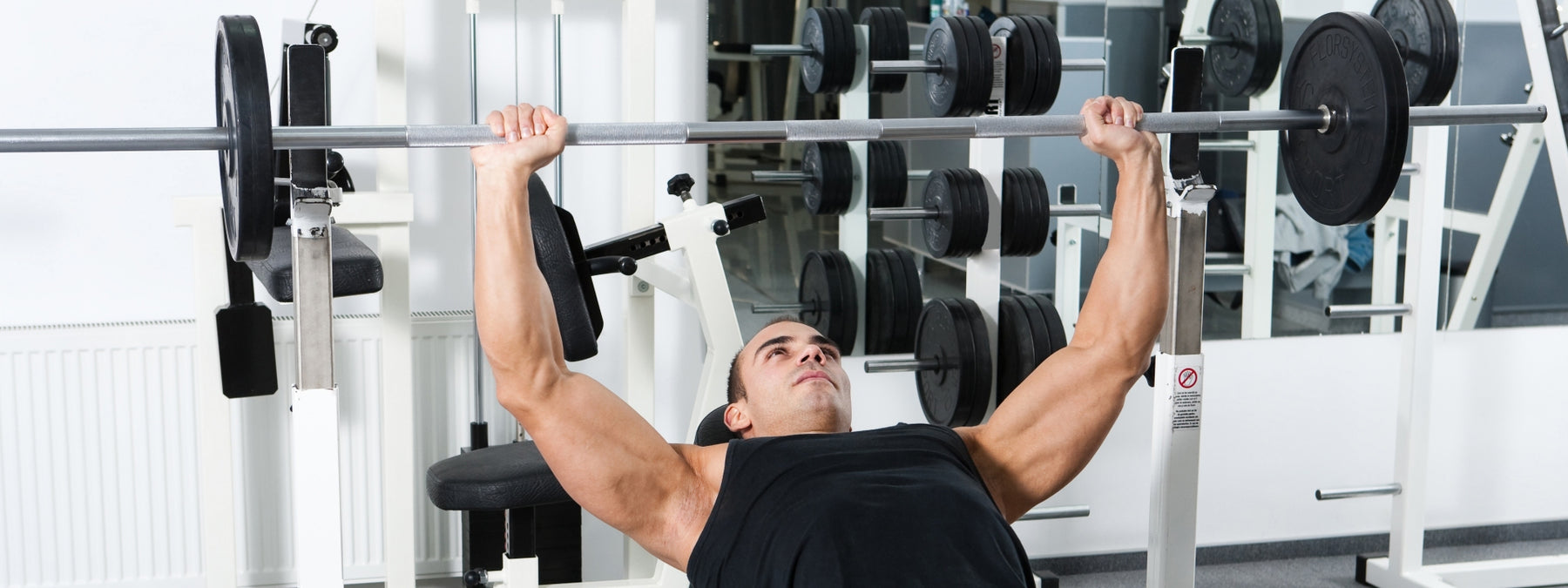
Incline Chest Press - Your Next Favorite Chest Exercise?
When you think of a chest workout, most of you think “bench press.” One of the most popular fitness-related search terms is “how to increase my bench press.”
The incline chest press could help.
But first, let’s quickly jump into the anatomy of our chest and what it takes to build a bigger and stronger chest.
Related - Quick Guide to Incline Dumbbell Bench Press
Your pectorals, often referred to as pecs, are the muscles that connect the front of your chest with the bones of your upper arm and shoulder.
Pactoralis Major
This is the thick, fan-shaped muscle that makes up the bulk of the chest. IT lies under the breast and it will flex, extend, and rotate the humerus — the long bone of your upper arm.
Pectoralis Minor
This is a thin, triangular muscle that’s located just beneath the pectoralis major. It is attached to your ribs and stabilizes your scapula, which is the large bone of the shoulder.
Subclavius Muscle
This muscle forms the axilla, which is your armpit. It helps move the shoulder downward and forward.
Serratus Anterior
This is another muscle on the front of your chest, except this one moves the scapula forward around your torso, similar to throwing a punch.
Intercostal Muscles
These are smaller muscles between our ribs which help with our breathing.
Incline Chest Press
The incline chest press is a popular bench variation that trains your chest along with your shoulders and triceps. The incline on the bench allows you to focus on the upper part of your chest and recruiting more of your shoulders into the lift.
The upper chest is a lagging part on many lifters.
Performing this exercise with dumbbells will involve more stabilizer muscles and it allows the lifter to press in a more natural position. Lifters with poor posture or a prior shoulder injury can benefit from pressing without compromising your shoulders.
The upper chest press is an exercise you can put in your chest workout, an upper body workout, a full body workout, or your push workouts.
Incline Chest Press - How To
Grab yourself a set of dumbbells. Choose a weight that is easy so you can get the feel of the exercise before increasing the weight.
Sit on the bench and rest the dumbbells on the top of your thighs. Lift the weight up to your chest while you are leaning back. This is a great way to utilize your abs more.
As you lean back and the weight is close to your chest, take a deep breath and press the dumbbells up. Lower the dumbbells in a controlled manner and contract your chest muscles and repeat for the desired reps and sets.
When done, rest the weight on your thighs and then put them up. Throwing them to the side bends them, makes them loose, and could potentially hurt someone.
Try to use a spotter if you are using heavy dumbbells so they can take them from you.
Incline Chest Press Tips
Getting the most out of this workout is easy.
Maintaining more time under tension is a key to building muscle. Lower the weight with a slower tempo and refrain from locking your elbows completely out.
Avoid touching the dumbbells as you complete a press — if they hit too hard together, it can really throw off your groove and it could cause an injury. Shoulder injuries are not fun.
Squeeze the dumbbells as tight as you can. This is going to promote greater shoulder stability and strength through a phenomenon known as irradiation.
Clench your fist as tight as you can. Our main objective is to squeeze our hand into a ball as tight as we can, but you may notice your biceps, triceps, and even chest engaged. This will produce power.
Keep your shoulder blades pinched together as you lift. This will keep your shoulders in a more stable and safe position.
Keep your feet flat on the floor — this is going to provide more stability and allow your body to produce more power.
When adding the incline chest press to your routine, choosing a heavier five sets of five reps, three sets of 12 reps, or even five sets of eight reps all are great choices. This would be training for strength, hypertrophy, and powerbuilding, respectively.
Use this exercise as an accessory lift to other pressing — this is a great workout after your barbell bench press or superset with a bicep exercise.
